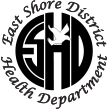How do I maintain my Septic System?
If you own a house on septic, follow these simple guidelines:
- HAVE YOUR SEPTIC TANK PUMPED OUT every 3 years
- DO NOT FLUSH THE FOLLOWING:
Dental floss, Feminine hygiene products, Condoms, Diapers, Cotton swabs, Cigarette butts, Coffee grounds, Cat litter, Paper towels - DO NOT FLUSH hazardous chemicals into your septic system
- AVOID dumping fats, oils or greases into sink (use empty can, let solidify, throw away in garbage)
- AVOID well water treatment systems that discharge or backwash into septic tank
- AVOID flushing latex paints, paint thinners, anti-freeze, gasoline, oil, or pesticides into septic tank
- DO NOT use any additives that are reported/ advertised to help your septic tank (yeast, system cleaners, etc); they can cause permanent septic damage, even failure
- New septic systems regulations require that the size of septic tanks be increased by 250 gallons if garbage disposals are included
- Remember, if you have a septic system and private well, what you flush eventually ends up becoming what you drink!
- Homeowners should not allow any heavy machinery to be driven over any part of the septic system.
- Be sure that if you own an irrigation system, that it is located at least 10 feet away from your septic system.
Be advised that the following activities may require a permit:
- Driveways (except septic systems with H20 load rating)
- Landscape/ excavation work/ filling
- Irrigation systems (must be at least 10')
- Retaining walls
- Any drainage work
- Outdoor jacuzzis/ hot tubs
Check with your local building department, and consult with ESDHD if any of these activities are proposed in the septic system area.
